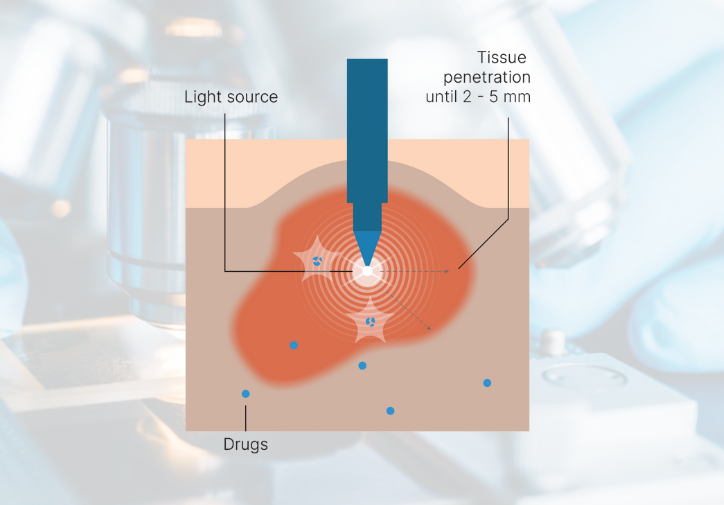Fighting Cancer with Silver & Light
We eliminate cancer cell by cell, so it never returns.
We developed a novel drug that is 6.000 times smaller than a human cell, allowing it to bypass the tumor cell defense mechanisms. Once in the nucleus the drug is activated by light, causing a spike and resulting in cell death.
Grants & Loans Secured
Research Projects in Progress
Cancer Indications Targeted
We believe in a world where precision medicine can make cancer a treatable disease. Our mission is to close the gap in global cancer care by offering safe, effective, and complementary treatments to patients everywhere.
Why GenLumina?
Oncology treatments are still limited due to off-target toxicity, drug resistance and bad tumor penetration.

Drug Design
We use DNA-encapsulated silver nanoclusters that create a drug small enough to enter tumor cell nuclei.

Activation Mechanism
Inside the tumor cell nucleus, the drug is activated by light, triggering a controlled toxic spike that directly attacks the cancer cell, leaving healthy tissues unharmed.

Safety & Efficacy
Our approach is less invasive, easing the burden on patients and healthcare systems.
Explore Our Technology
GenLumina’s innovation lies in our light-activated DNA nanotechnology. We create ultra-small packages to deliver a toxic payload directly into the cell nucleus. Using Two-Photon excitation we enable high penetration, and using Spatial Light Modulation, we activate the drug precisely at the tumor site.

Controlled and Localised Destruction
Treating cancer cells with unmatched accuracy, limiting side effects.

Compatibility with Existing Equipment
Scalable solutions using widely available surgical equipment in operating rooms.
You can count on us for using our drug to push the boundaries of what is possible in precision oncology.


